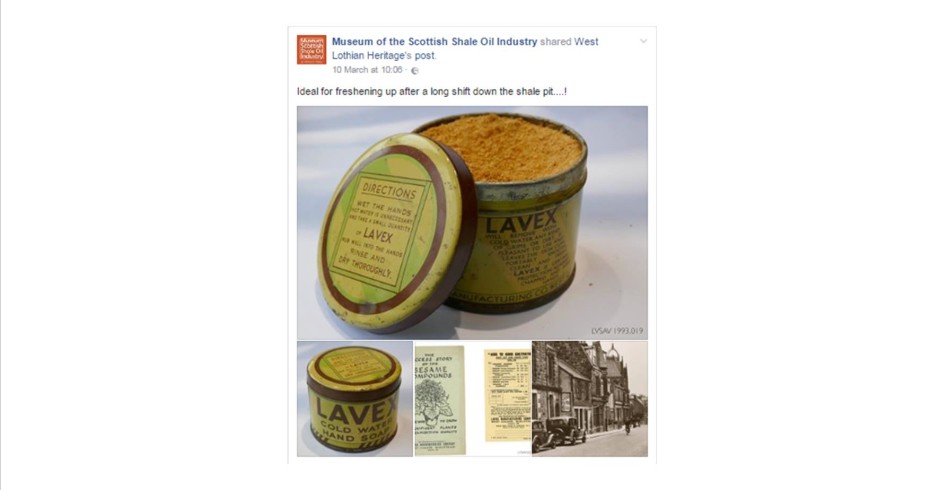Telling Tales With Social Media

We do social media. We don’t fully understand it, but know that it’s important. It’s essential to our marketing. It helps spread the word about who we are and what we do. We can use it to express a personality that people can identify with and feel a part of. It demonstrates value, engagement, support and all sorts of other good stuff that ultimately pays the bills.
Almond Valley has fingers in lots of pies. We’ve chosen to have a number of online identities and tinker in a number of channels. We’re still finding our way, don’t yet attract big social media audiences, and don’t give huge forethought to posts. After all, social media is all about spontaneity, informality, empowerment and the unexpected.
Why we use social media
What’s important is that all of our team are increasingly social media savvy, and that it becomes second nature to recognise interesting stories and think about inventive ways of expressing them. Given that the characteristics of a good online post are often the same as those of a good visitor experience, this should have even wider benefit. The immediate feedback to each post quickly builds experience about what may or may not work, but shouldn’t deter continuing experimentation. Unpredictability is fun.
In addition to providing a great platform from which to wave the flag, social media is also a brilliant way of sharing knowledge. After all, this is why we’re here. It’s wonderful to reach out to folks in the comfort of their living room, (or wherever else they’re balancing their laptop), to share images and knowledge from our collection, and encourage conversation.
How we use social media
Recently, we’ve been telling tales using Facebook, which seems the best medium for sharing short but meaningful nuggets of history. Stories of two or three paragraphs and a handful of images seem about the right length. Much more would become cumbersome and blog-like, much less seems just a little trivial. Currently, our museum activities have two Facebook identities: Museum of the Scottish Shale Oil Industry and West Lothian Heritage. This reflects the balancing act between our national role as custodian of a Recognised collection, and our broader local interests. The jury’s still out on whether this online split personality is a useful distinction.
Facebook posts might typically start with “something interesting” which is then built upon and set in context. A museum or archive object, and associated collection records, seems an obvious starting point. However, this can be far more than simply a show-and-tell. With such a wealth of research resources now available online, it only takes an hour or so to expand rough notes into a well-rounded piece of research. Just think historic newspapers, census and family records, the brilliant digital maps and trade directories provided by NLS, and so much more.
Engaging the public with heritage
Whilst avid consumers from this pool of digital goodness, we’re proud also to contribute to it. Much of our museum efforts over the last five-or-so years have been devoted to digitising material from our collection and the company archives we hold, sharing these through our website. A brave team of volunteers continue with this task. Our website scottishshale.co.uk also holds huge reference sections that offer meaty chunks of research that others can (and do) thread together to create their own histories.
In an online age, we’d be short-sighted and foolish not to embrace new opportunities to deliver services and involve our audiences. But in the flat, two-dimensional world of social media there’s little to distinguish a museum from any other organisation sharing knowledge of heritage; and there is a wealth of other players. Many national organisations have reinvented themselves to serve an online world, and have fuelled further change (thanks again NLS). Many museums, libraries, archives, built heritage, archaeological and other organisations contribute to this pool of online knowledge on a national, regional, or local basis. There’s an increasing convergence of interests.
Social media in particular, has removed barriers to popular participation in heritage. It’s simply a matter of typing and pressing “send”. In a wonderful flowering of people power, heritage pages by enthusiasts and community groups have blossomed; sharing images, information, and sometimes excellent bodies of historical research. Many have a great following and a substantial engagement.
So what does this all mean for us?
Many of our for the future are based on partnerships. In our shale oil museum identity we’re working to strengthen links with oil heritage interests nationally and internationally. Partnership with our pals in GoIndustrial extends the opportunity to celebrate shale oil’s contribution to Scotland’s industrial fabric. Closer to home, we’re exploring further ways of working with former shale communities, supporting them in telling their own stories. And as part of a museum service for West Lothian, a planned study will fundamentally review heritage needs, and offer an amazing opportunity to shape a modern heritage service for our area. In all cases, online resources, and social media in particular, seem likely to play a central role.
With thanks to Nationally Significant Collections for letting us re-blog!

